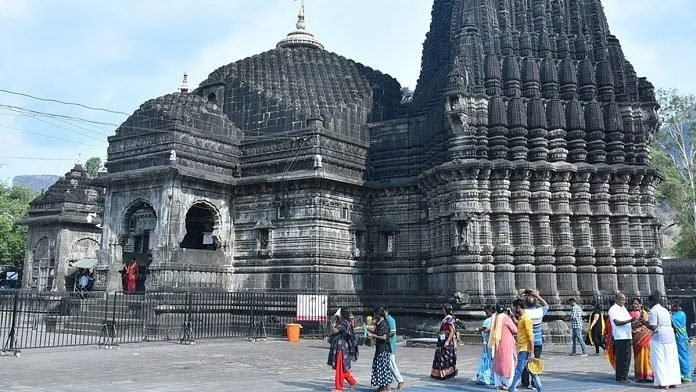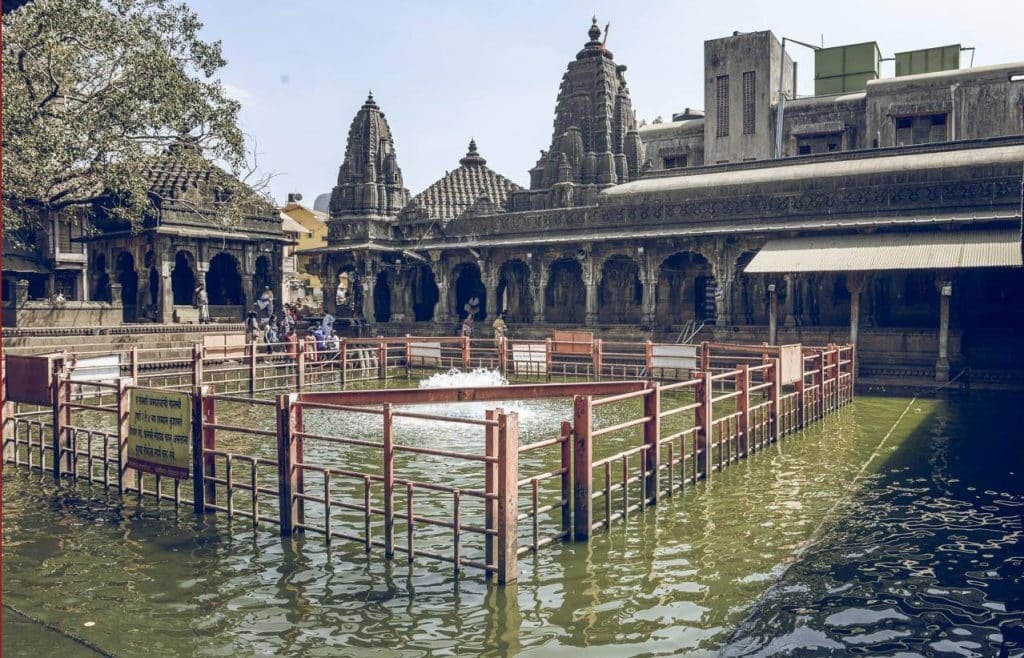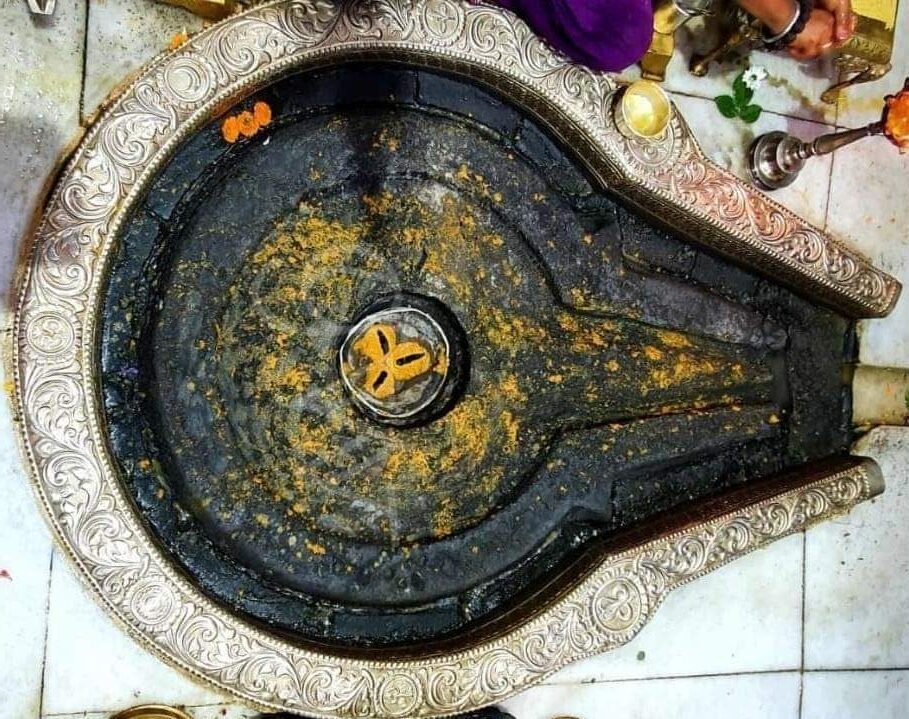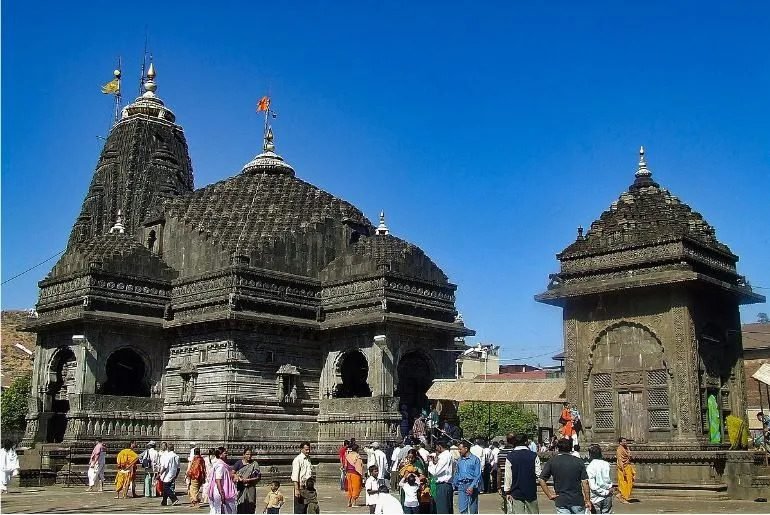Triambakeshwar Jyotirlinga: Beyond the Myth, A Journey Through Faith and History

Adi Shankaracharya in Dwadash Stotra says, “In the land of holy Godavari, I meditate with exclusive devotion to the Triambakeshwar, the Trimurti, who always resides on the top of Sahyadri. All the sins of devotees who come here for darshan with pure bhava are destroyed.” Sitting in the foothills of the 3 hills Brahmagiri, Nilagiri and Kalagiri, situated in the holy city of Nashik, Triambakeshwar jyotirlinga is a place where Shiva resides along with Brahma and Vishnu.

Trimbak was thought to be the home of Gautam Rishi and his wife Ahilya, as well as the land of rishis. When the region was hit by a severe drought, Gautam Rishi prayed to the God of Rain for rain. Lord Varuna, pleased with his prayers, showered Trimbak with rain for several days at a time. It made it easier for Gautam Rishi to plant crops and provide food for the increasing number of guests staying at his Ashram. It only made Gautam Rishi’s punyas stronger.
He once unintentionally killed an innocent cow with his dharba while strolling through the fields. The cow was Jaya, Parvati’s friend who had assumed the shape of a cow. When they learned of the horrible crime, other rishis declined to visit his Ashram. Gautam Rishi begged them to show him the correct route so he could get rid of his sins.

The Rishis advised him to bathe in the Ganges to wash away all of his sins and to pray to Lord Shiva to release the Ganges. Following this, Gautam Rishi spent more than 1000 years performing penance at the top of the Brahmagiri Hills. After hearing his prayers, Lord Shiva decided to ask Ganga to flow in order to wash away his sins. Ganga, though, appeared to have a different idea. Shiva then dashed his jata and danced Tandav Nritya atop Bhramagiri. The fearful Ganga then made an appearance in the Triambak Tirtha. Maharishi Gautama praised her, but she vanished in rage after making several appearances on the mountain. It was impossible for Maharishi Gautama to take a bath in her waters. The Ganges then made an appearance in Varaha-tirtha, Rama-Laxman-tirtha, Ganga Sagar-tirtha, and Gangadwar. Maharishi Gautama was nevertheless unable to take a bath in her waters. The river was then surrounded by magical grass, and Maharishi Gautama made a vow to her. That was where the flow stopped, and that’s how the tirtha got its name, Kushavarta/ Kushavarta Kunda. The Godavari River rises to the sea from this Kushavarta. Gautam Rishi then bathed in it to wash away all his transgressions.

The people who live nearby the Triambakeshwar Shiva Temple are full of wonder stories. The temple’s three-faced lingam, which represents Lord Vishnu, Lord Brahma, and Lord Rudra, is one of its many distinctive features. A jeweled crown is placed over the Gold Mask of Tridev, covering the three-faced lingam. Emeralds, diamonds, and other priceless stones beautify the crown. The crown is thought to have originated during the Pandava era. Another glory was the presence of Nashik diamond, a world-famous gem on the Jyotirlinga till 18th century. But the gemstone was looted by the British during the 3rd Anglo- Maratha war. It is currently owned by a USA based businessman in Connecticut.
The original temple was completely razed down by the Muslim kings. The construction of the temple’s current structure happened between 1755 and 1768 during Nana Saheb Peshwa’s reign. The temple’s architecture is mechanically shaped and is in the Hemad panthi style of architecture. Surrounded by stone walls on four sides, the temple faces eastward. Five golden pots can be found in each of the tombs at Triambakeshwar Temple’s five domes. All five substances are used to make the temple’s flag. Anna Saheb Vichurkar was the donor of the flag and the golden pots.

A small Nandi temple is the first structure on the entrance. Sabhamandap, a tiny hall, is where people gather. Here, various pujas are performed by purohits. Various sculpting and carvings of lord Brahma and other devatas can be observed on the walls of the temple.
Every twelve years, the Nashik-Triambakeshwar Simhastha takes place. The precise dates are decided by combining various zodiac positions: the mela may take place during the times when Jupiter is in Leo, which is known in Hindu astrology as Simha, or during the lunar conjunction (Amavasya) when Jupiter, Sun, and Moon are all in Cancer.
The fair was first held in Triambak, a town close to Nashik, until 1789. In that year, a dispute arose between Shaivite sanyasis and Vaishnavite bairagis regarding the bathing sequence, which signified the standing of the akharas. According to a Maratha Peshwa copperplate inscription, 12,000 ascetics perished in this battle. Consequently, the Peshwa moved the Vaishnavites’ bathing location to the city of Ramkund in Nashik. The Shaivites still believe that Triambak is where the fair should be held.

The Triambakeshwar Jyotirlinga is proof of India’s rich spiritual and cultural legacy. This historic shrine to Lord Shiva is tucked away in the tranquil town of Triambak, and provides both devotees and tourists with an unforgettable experience. Beyond just its spiritual significance, it represents a rich tapestry of mythology, history, and opulent architecture. The temple’s significance is increased by its special connection to the holy river Godavari and the myth of its heavenly beginnings, which make it an essential location for pilgrimages and meditation. Whether you are drawn to Triambakeshwar Jyotirlinga by faith, history, or the breathtaking scenery, a trip there is guaranteed to be life-changing. Accept the calm and reverence of this hallowed place and allow it to stimulate a closer relationship with God.


